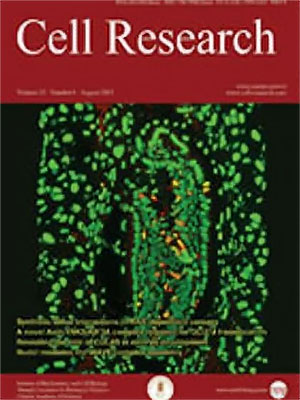
Volume 15, No 8, Aug 2005
ISSN: 1001-0602
EISSN: 1748-7838 2018
impact factor 17.848*
(Clarivate Analytics, 2019)
Volume 15 Issue 8, August 2005: 665-677
ORIGINAL ARTICLES
Different expression patterns of duplicated PHANTASTICA-like genes in Lotus japonicus suggest their divergent functions during compound leaf development
Jiang Hong LUO1, Jun YAN1, Lin WENG1, Jun YANG1, Zhong ZHAO3, Jiang Hua CHEN1, Xiao He HU1, Da LUO1,2,*
1National Laboratory of Plant Molecular Genetics, Institute of Plant Physiology and Ecology, Shanghai Institutes for
Biological Sciences, and Graduate School of the Chinese Academy of Sciences, Chinese Academy of Sciences, 300 Fenglin Road,
Shanghai 200032, China
2School of Life Science and Biotechnology, Shanghai Jiao Tong University, 1954 Huashan Road, Shanghai 200030, China
3Department of Biochemistry, School of Life Sciences, Fudan University, Shanghai 200433, China
Correspondence: Da LUO(dluo@sibs.ac.cn)
Recent studies on leaf development demonstrate that the mechanism on the adaxial-abaxial polarity pattern formation could be well conserved among the far-related species, in which PHANTASTICA (PAHN)-like genes play important roles. In this study, we explored the conservation and diversity on functions of PHAN-like genes during the compound leaf development in Lotus japonicus, a papilionoid legume. Two PHAN-like genes in L. japonicus, LjPHANa and LjPHANb, were found to originate from a gene duplication event and displayed different expression patterns during compound leaf development. Two mutants, reduced leaflets1 (rel1) and reduced leaflets3 (rel3), which exhibited decreased adaxial identity of leaflets and reduced leaflet initiation, were identified and investigated. The expression patterns of both LjPHANs in rel mutants were altered and correlated with abnormalities of compound leaves. Our data suggest that LjPHANa and LjPHANb play important but divergent roles in regulating adaxial-abaxial polarity of compound leaves in L. japonicus.
FULL TEXT | PDF
Browse 1978


